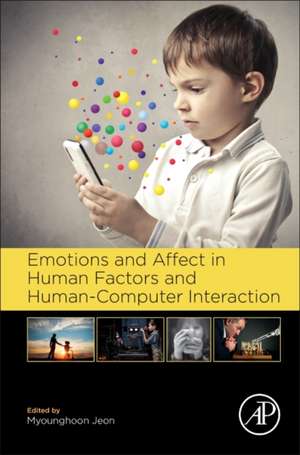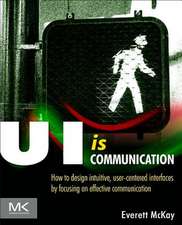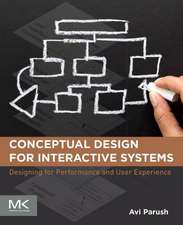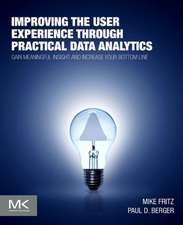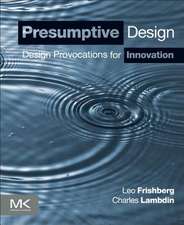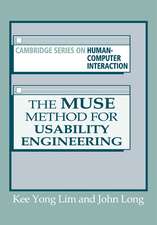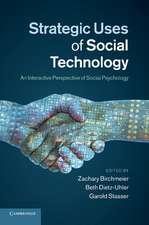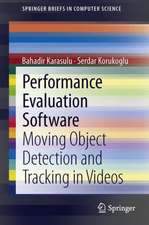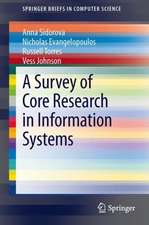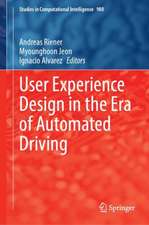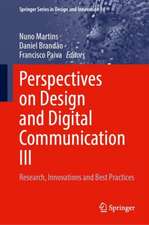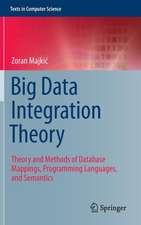Emotions and Affect in Human Factors and Human-Computer Interaction
Editat de Myounghoon Jeonen Limba Engleză Hardback – 5 apr 2017
The text covers the basis of neural mechanisms of affective phenomena, as well as representative approaches to Affective Computing, Kansei Engineering, Hedonomics, and Emotional Design. The methodologies section includes affect induction techniques, measurement techniques, detection and recognition techniques, and regulation models and strategies. The application chapters discuss various H/F and HCI domains: product design, human–robot interaction, behavioral health and game design, and transportation. Engineers and designers can learn and apply psychological theories and mechanisms to account for their affect-related research and can develop their own domain-specific theory. The approach outlined in this handbook works to close the existing gap between the traditional affect research and the emerging field of affective design and affective computing.
- Provides a theoretical background of affective sciences
- Demonstrates diverse affect induction methods in actual research settings
- Describes sensing technologies, such as brain–computer interfaces, facial expression detection, and more
- Covers emotion modeling and its application to regulation processes
- Includes case studies and applied examples in a variety of H/F and HCI application areas
- Addresses emerging interdisciplinary areas including Positive Technology, Subliminal Perception, Physiological Computing, and Aesthetic Computing
Preț: 442.97 lei
Preț vechi: 650.22 lei
-32% Nou
Puncte Express: 664
Preț estimativ în valută:
84.79€ • 92.13$ • 71.27£
84.79€ • 92.13$ • 71.27£
Carte tipărită la comandă
Livrare economică 14-28 aprilie
Preluare comenzi: 021 569.72.76
Specificații
ISBN-13: 9780128018514
ISBN-10: 0128018518
Pagini: 624
Dimensiuni: 152 x 229 x 37 mm
Greutate: 1 kg
Editura: ELSEVIER SCIENCE
ISBN-10: 0128018518
Pagini: 624
Dimensiuni: 152 x 229 x 37 mm
Greutate: 1 kg
Editura: ELSEVIER SCIENCE
Cuprins
Part I: Foundations of affective sciences
1. Emotions and Affect in Human Factors and Human–Computer Interaction: Taxonomy, Theories, Approaches, and Methods
2. Neural Mechanisms of Emotions and Affect
3. Mood Effects on Cognition: Affective Influences on the Content and Process of Information Processing and Behavior
4. Cross-Cultural Similarities and Differences in Affective Processing and Expression
5. On the Moral Implications and Restrictions Surrounding Affective Computing
Part II: Frameworks of affective sciences in human factors and human-computer interaction
6. Design and Emotional Experience
7. From Ergonomics to Hedonomics: Trends in Human Factors and Technology—The Role of Hedonomics Revisited
8. An Approach Through Kansei Science
9. Affective Computing: Historical Foundations, Current Applications, and Future Trends
Part III: Methodologies: introduction and evaluation of techniques
10. Affect/Emotion Induction Methods
11. Affect Measurement: A Roadmap Through Approaches, Technologies, and Data Analysis
12. The Role of Registration and Representation in Facial Affect Analysis
13. On Computational Models of Emotion Regulation and Their Applications Within HCI
Part IV: Applications: case studies and applied examples
14. Evolution of Emotion Driven Design
15. Affective Human–Robot Interaction
16. Computational Modeling of Cognition–Emotion Interactions: Theoretical and Practical Relevance for Behavioral Healthcare
17. Emotions in Driving
Part V: Emerging areas
18. Positive Technology, Computing, and Design: Shaping a Future in Which Technology Promotes Psychological Well-Being
19. Subliminal Perception or "Can We Perceive and Be Influenced by Stimuli That Do Not Reach Us on a Conscious Level?"
20. Physiological Computing and Intelligent Adaptation
21. Aesthetic Computing
1. Emotions and Affect in Human Factors and Human–Computer Interaction: Taxonomy, Theories, Approaches, and Methods
2. Neural Mechanisms of Emotions and Affect
3. Mood Effects on Cognition: Affective Influences on the Content and Process of Information Processing and Behavior
4. Cross-Cultural Similarities and Differences in Affective Processing and Expression
5. On the Moral Implications and Restrictions Surrounding Affective Computing
Part II: Frameworks of affective sciences in human factors and human-computer interaction
6. Design and Emotional Experience
7. From Ergonomics to Hedonomics: Trends in Human Factors and Technology—The Role of Hedonomics Revisited
8. An Approach Through Kansei Science
9. Affective Computing: Historical Foundations, Current Applications, and Future Trends
Part III: Methodologies: introduction and evaluation of techniques
10. Affect/Emotion Induction Methods
11. Affect Measurement: A Roadmap Through Approaches, Technologies, and Data Analysis
12. The Role of Registration and Representation in Facial Affect Analysis
13. On Computational Models of Emotion Regulation and Their Applications Within HCI
Part IV: Applications: case studies and applied examples
14. Evolution of Emotion Driven Design
15. Affective Human–Robot Interaction
16. Computational Modeling of Cognition–Emotion Interactions: Theoretical and Practical Relevance for Behavioral Healthcare
17. Emotions in Driving
Part V: Emerging areas
18. Positive Technology, Computing, and Design: Shaping a Future in Which Technology Promotes Psychological Well-Being
19. Subliminal Perception or "Can We Perceive and Be Influenced by Stimuli That Do Not Reach Us on a Conscious Level?"
20. Physiological Computing and Intelligent Adaptation
21. Aesthetic Computing
